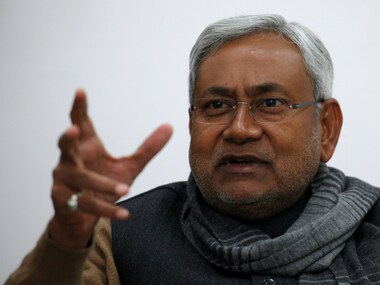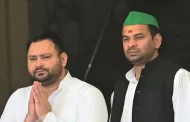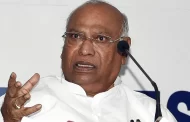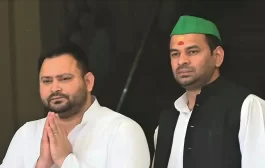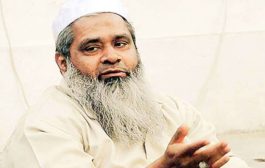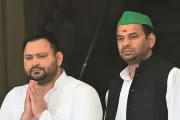All said and done, the alliance between the Bharatiya Janata Party (BJP) and the Shiv Sena highlights at least two significant developments: One, the BJP’s nervousness, and two, the Shiv Sena’s ability to arm twist the “world’s biggest political party” into submission. The Sena managed to get an equality in status with a party that once was only piggybacking it. The two saffron units, on Sunday, announced that the BJP will contest from 25 Lok Sabha seats and the Sena from 23 seats in the upcoming general elections, while the parties will fight it out in an equal share for the polls to the 288-member Maharashtra Assembly a few months after the parliamentary elections.
But that’s only part of the story. One part of the narrative is the question of how reliable would the Shiv Sena be once the results of the Lok Sabha elections are declared. From what Uddhav Thackeray told his party leaders and cadre on Wednesday, the alliance is not a done done but one that has several nuggets of mystery. While the BJP made it clear that the chief ministerial nominee would be from the party that wins the highest number of seats, the Shiv Sena said it would want to be at the helm of the state regardless of the numbers.
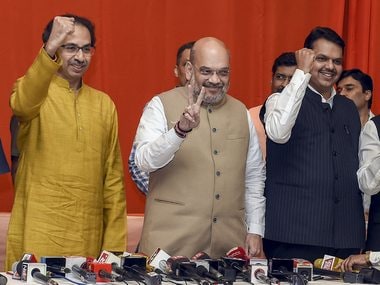
The most telling comment from Uddhav Thackeray on Wednesday was that the Shiv Sena had won the battle with the BJP by working out an alliance, but the war has yet to be fought. It now appears that the so-called war will be fought after the results of the Lok Sabha elections are declared. The uncertainty of government formation and the post-poll reworking of parties other than the BJP will, indeed, offer a very nice battleground. Should it win enough seats to sway the fortunes of the BJP-led NDA to its advantage, that would be the trump card. The quid pro quo for support would be the chief ministership of Maharashtra.
Poll after poll conducted by TV stations has shown that the BJP’s popularity is on the decline, and that the party will need support to form a government again. That BJP president Amit Shah had to make two visits to Thackeray abode Matoshree — an index of the self-importance the Sena assigns to itself — betrayed the national party’s nervousness; it was forced to form an alliance with a party that has needled it all along, leaving no opportunity to make jibes, including attending Opposition rallies. It was an optics that certainly left the BJP in dismay. Although Thackeray politely said he was “only guiding” the government, his comments are hurting the image the BJP has built over the past five years.
The BJP may well mock the Opposition’s “mahagatbandhan” as “maha milavat”, but the party itself has scurried around trying to forge alliances with any outfit that has not already quit the NDA. Unlike the in-your-face confidence the BJP exuded in the run-up to the 2014 Lok Sabha elections, it is now buying insurance. And as far as the Sena is concerned, the BJP has also taken a significant risk on board. Earlier, when the BJP was a subordinate party, the Shiv Sena had no issues. But when the roles were reversed in 2014, its displeasure has been evident — the Sena is a partner, not a trusted ally.
The Shiv Sena has never been interested in national politics and had not expected much presence in the Lok Sabha till it won 18 seats in alliance with the BJP in 2014. Its political business model was simple: Let the BJP do what it wanted in Delhi as long as the Sena had a free run to oversee the government and major civic bodies in Maharashtra. It wanted the BJP to always remain the younger brother, but Modi’s sway over voters had a positive impact on the Sena, too, that year, and ambition overwhelmed its historic equations with the BJP with regard to state politics.
Ahead of the last Maharashtra Assembly elections, the Sena broke its alliance with the BJP and contested on its own. Despite the absence of Shiv Sena supremo Bal Thackeray and its old ally, Uddhav managed a good hit rate. The Sena secured 63 Assembly seats. In 2009, it had won only 44 and the BJP, 46; 62 to BJP’s 54 in 2004; 69 to BJP’s 56 in 1999; and its best, 73 to BJP’s 65 in 1995. Looking at these numbers, the Sena scoring 63 can be considered spectacular, given the circumstances in which it fought the 2014 Assembly elections, after severing ties with a party that pushed it to a significant number in the Lok Sabha just months earlier.
This makes the Sena’s game plan is simple: Regain its primacy in Maharashtra with respect to the BJP. It will, again, fight the Lok Sabha elections with the BJP, and should the BJP fail to get a sufficient number to retain the NDA it is trying to stitch together, it may scout for newer opportunities to arm twist both Amit Shah and Narendra Modi to get an upper hand in Maharashtra politics.
The Shiv Sena has been visibly chafing since the day it realised it could be left out in the cold if the party did not get included in the government. The Sena then found an interesting, and even viable, strategy of being the Opposition, with all the advantages of being in the government.
source: Firstpost.com


